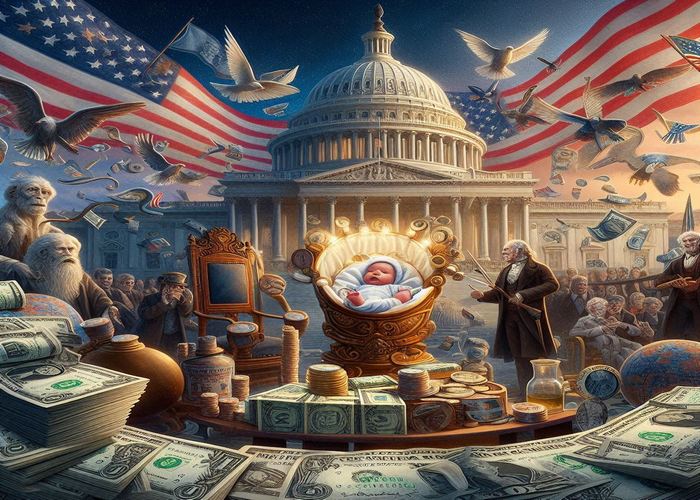The Role of the Federal Reserve in Dollar Creation
When we think of the origins of US dollars, the first institution that comes to mind is the Federal Reserve. Often referred to simply as "the Fed," the Federal Reserve is the central banking system of the United States, and it plays a crucial role in the creation of dollars. The Fed controls the money supply by implementing monetary policy, which includes the issuance of currency. However, it's not as simple as just printing more money. The Fed's actions are carefully calibrated to balance economic growth with inflation control.

The Evolution of the US Dollar: From Gold Standard to Modern Times
The US dollar has not always been the free-floating currency we know today. Originally, it was tied to the value of gold—a system known as the gold standard. This meant that every dollar in circulation was backed by a specific amount of gold held by the government. However, as the global economy grew more complex, the limitations of the gold standard became apparent, leading to its eventual abandonment in 1971. Today, the dollar operates as a fiat currency, meaning its value is derived from the government's declaration that it is legal tender, rather than being tied to a physical commodity like gold.
The Key Factors Influencing Dollar Issuance
Several factors influence how many dollars are in circulation. These include economic conditions, inflation rates, and the overall demand for the currency both domestically and internationally. For instance, during times of economic uncertainty or recession, the Fed may decide to increase the money supply to stimulate growth. Conversely, if inflation is too high, the Fed might reduce the money supply to curb rising prices. International demand for dollars also plays a significant role, as the US dollar is widely used in global trade and as a reserve currency by many countries.
The US Treasury's Role in Dollar Emission
While the Federal Reserve is responsible for monetary policy, the actual production of US dollars falls under the jurisdiction of the US Department of the Treasury. The Treasury’s Bureau of Engraving and Printing produces paper currency, while the US Mint is responsible for coinage. The Treasury issues new currency as needed to replace old or damaged notes and to meet the growing demand for cash, ensuring that the currency supply remains robust and efficient.
The Process of Printing and Distributing US Banknotes
The production of US banknotes is a complex and highly secure process. The Bureau of Engraving and Printing operates two facilities, one in Washington, D.C., and another in Fort Worth, Texas, where billions of dollars are printed each year. The process begins with the design of the currency, followed by engraving, printing, and inspection to ensure each note meets stringent quality standards. Once printed, the banknotes are distributed through the Federal Reserve to financial institutions across the country, where they enter into circulation.
Understanding the Mechanics of Dollar Supply
Understanding where US dollars come from requires a grasp of the intricate mechanisms that govern the currency’s supply. The Federal Reserve, the US Treasury, and the broader economic environment all play interconnected roles in this process. Whether through open market operations, interest rate adjustments, or direct currency issuance, the balance between supply and demand is continuously managed to maintain the dollar's value and support the stability of the economy.
Navigating the Complexities of the US Monetary System
The US monetary system is a dynamic and complex structure that has evolved over centuries. From its origins under the gold standard to its current status as the world’s most widely used currency, the dollar's journey is a testament to the adaptability and resilience of the American economy. By understanding the processes and institutions involved in the creation and management of US dollars, we gain insight into not just the mechanics of money, but also the broader forces that shape the global financial landscape.


